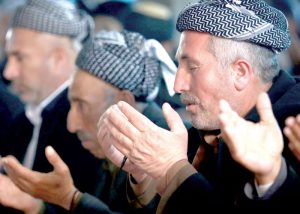When an Islamic State (IS) suicide bomber killed 88 people and wounded hundreds more at a Sufi shrine in Sehwan on February 16, it did not deter the devotees of Lal Shahbaz Qalandar, the 13th-century Sufi mystic, who draws millions to his tomb in Pakistan’s Sindh privince.
The attack followed a bombing in November 2016 at another Sufi shrine in the remote Baluchistan region which killed at least 52 people, like reported by theconversation.com .
Sufism, a distinct theological strand in Islam, has a strong presence in Pakistan. Sufi saints are venerated by a significant proportion of the Muslim population, especially, though not exclusively, in rural areas. Some Sufi shrines provide a langar (free daily meal) a guarantee of food for the poor for whom there is no other safety net. But it is not just the poor who visit shrines. They are places where thousands unburden themselves, sharing their inner turmoil at the feet of holy people they believe can intercede on their behalf. The belief is that a prayer by a saint can alleviate poverty, cure illness, amend relations with loved ones and provide solace from the trials of life.
Away from the desires of the material world, Sufis believes a connection with a saint can build a connection with God, Allah. There are many thousands of shrines across Pakistan, South and Central Asia and the Middle East.
It is not just Islamic State (IS) who have issues with shrine-based religious practices within Islam. Deobandis, for example, who focus on the scriptures of Islam, are critical of the veneration of saints and the role of holy people as intercessors between the individual and God. They believe such practices have been absorbed from local indigenous cultures. There are Sufi shrines across South Asia, for example, which are visited regularly not just by Muslims but by some Hindus and Sikhs too and vice-versa.
Sufism, too, is a broad church – and not all Sufis approve of the dancing and chanting at the tombs of saints. Diversity within Islam has always existed and doctrinal divisions go back to the time of the first prophet of Islam, Muhammad. It was on his death – and on the question of his rightful successor – that the sectarian division between Sunnis and Shias emerged. IS’s version of history glorifies seventh-century Arabia, distorting the battles and bloodshed that ensued in the wake of Prophet Muhammad’s death.
IS does not want to reform Islam, but to strip it of its history. Purge the religion of all who do not adhere to your version of what Islam is and how a Muslim should live their life, and you can start anew.
According to IS ideology, the foremost enemies of Islam are not the kuffar (non-believers) but those who call themselves Muslims and do not subscribe to the IS world view – a world view in which there is room for only one account of the past and only one way of being a believer. All else is innovation – or bid’ah – which IS forbids, and the Sufis are the guiltiest of all.
To IS, the Sufi practices of dhikr (devotional dance) Qawwali (music which praises the sublime) ta’widh (amulets with verses from the Qur’an for protection against the evil eye) are bid’ah. And, what takes place at the tombs of saints is a form of idolatry which takes Sufis outside the fold of Islam.
One Islamic world-view
Alongside these theological critiques of Sufism, IS targets Sufis for more pragmatic reasons. Sufism has the capacity to mobilise the masses, which makes it a competitor in the market place of faith. Systematic destruction of Sufi infrastructure through bombing holy monuments is also about destroying the artefacts of a religious competitor. Destruction of people and places on this scale is both a way of rewriting history and securing a future.
IS does not recognise the border of Pakistan or any of the states in the Middle East and South Asia. For IS these boundaries are irrational, established arbitrarily by colonial powers for their own ends. Its followers believe that the modern nation state is itself an innovation and an imposition on the Muslim world.
Where al-Qaeda’s mission was primarily to free Muslim lands from foreign occupation in the 1990s and 2000s, IS takes a longer view both in terms of the past – plunging through history and picking out fragments that suit its worldview – and for the future. It is fighting to claim territory, not for a secular nation state, but for an Islamic State where it can rebuild seventh-century Arabia without the compromises of 14 centuries of history.
For IS, sanctity lays not in human life nor in heritage but in one description of the truth and one vision of how to recreate it in the 21st century. That is why they glorify Islam’s past and want to purify its people.



